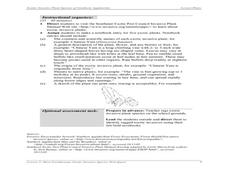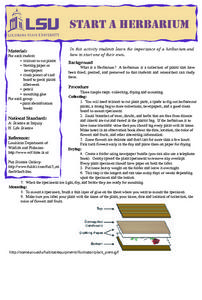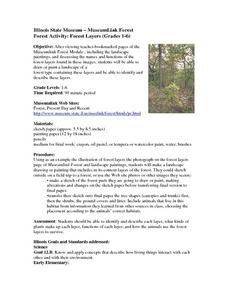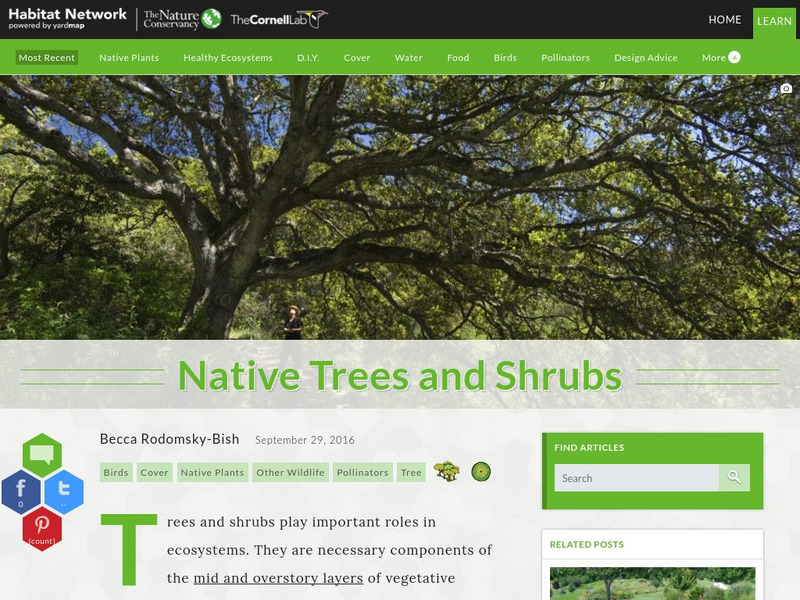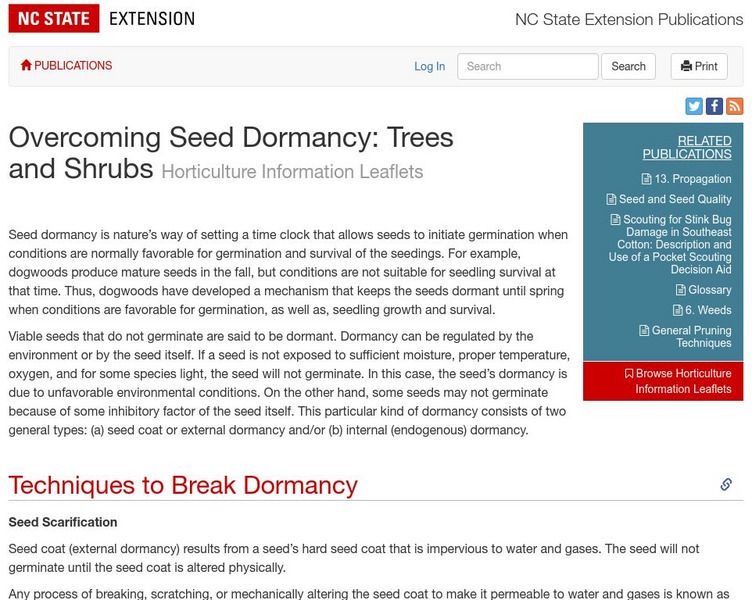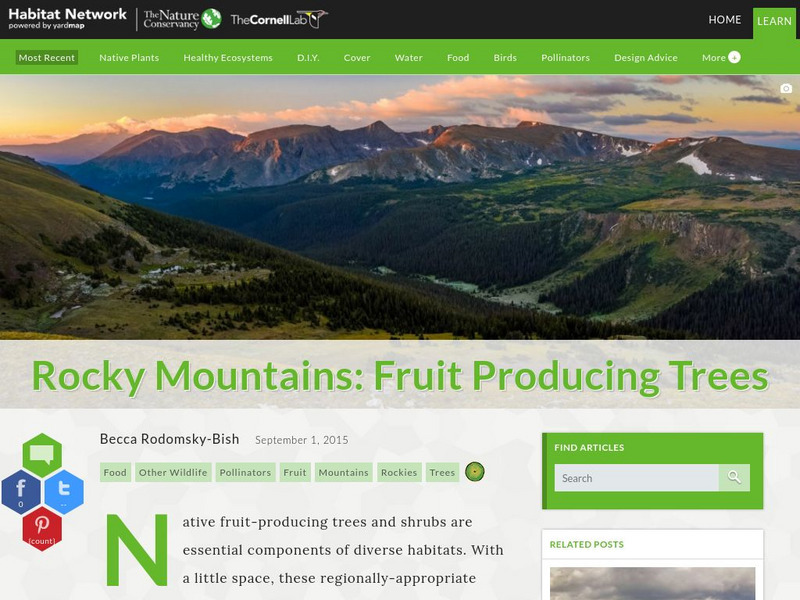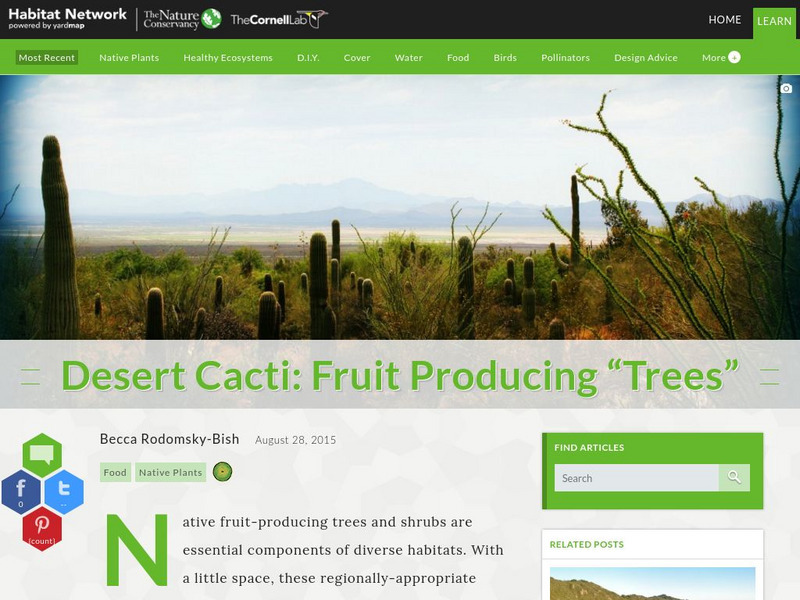Curated OER
How Healthy is the Wetland?
Students explore wetlands. In this ecology lesson, students visit a wetland site and collect data about the wetland functions. Students record their results and use the data recorded to rate the wetland site on its function.
Curated OER
What is a Dry Forest?
Learners explore the importance of the dry forest. For this science lesson, students discuss the history of dry forests and changes that have occurred due to human interaction. Learners create a map showing the historical range of the...
Curated OER
Most Troublesome Exotic Invasive Plant Species Web Quest
Students participate in a Web Quest activity in which they identify common exotic invasive plant species of the Southern Appalachian Region. After identifying the top 10 exotic invasive species, they choose one to research in depth.
Curated OER
Floristic Relay
Fifth graders identify the role succession plays in the adaptation of our environment. Students identify pioneer and climax species and order habitats in succession. They recognize that different characteristics of species make them...
Curated OER
Landscape Design
Students create a landscape plan and keep track of their costs. They present plans to a visiting contractor and designer.
Curated OER
Explorit's Foodplant Quiz
In this plants worksheet, students complete a five question multiple choice on-line interactive quiz about plants grown for food.
Curated OER
Monster in the Forest
Students maintain ball control while using their finger pads to dribble around general space, and keep the ball at waist level.
Curated OER
Optional Laboratory: Soil Particle Size and Texture
Students work together to perform experiments on different types of soil. They record the soil's pH level, color and texture. They develop hypothesis' on what they believe they will discover before beginning the experiment.
Curated OER
Zen Gardens
Learners study the design elements and symbolism of Japanese gardens through a hands-on lesson in Zen Garden design.
Curated OER
Start a Herbarium
Students explore importance of a herbarium and start one of their own.
Curated OER
Survival
Students identify characteristics of Australia, Africa and Antarctica and compare and contrast them to each other. They work together to identify adaptations that animals have used to survive. They also practice classifying animals.
Curated OER
Habitat Is Home
Students are introduced to the concept and components of a habitat. They discuss the key components of a habitat and describe how certain factors can cause disturbances in a habitat and change its population. Activities are leveled for...
Curated OER
What's It All About?- Kansas Prairies
Students examine the interdependence of animal life and the environment. In this Kansas prairies lesson, students read background information on prairies and complete a worksheet to identify the main idea.
Curated OER
Forest Activity: Forest Layers (Grades 1-6)
Students use the Museumlink Forest Module to view landscape paintings and discuss the names and functions of the forest layers. They paint or draw a landscape of a forest with the layers and explain them.
Cornell Lab of Ornithology
Habitat Network: Native Trees and Shrubs
Find out why vegetation such as trees and shrubs play important roles in ecosystems.
NC State University
Horticulture Information Leaflets: Overcoming Seed Dormancy: Trees and Shrubs
Good list of examples of how dormancy in tree seeds can be overcome. In the discussion, you'll pick up a fair amount about dormancy in plants.
Cornell Lab of Ornithology
Habitat Network: Rocky Mountains: Fruit Producing Trees
Find out why native fruit-producing trees and shrubs are essential components of diverse habitats.
Cornell Lab of Ornithology
Habitat Network: Southeast: Fruit Producing Trees
Find out why native fruit-producing trees and shrubs are essential components of diverse habitats.
Cornell Lab of Ornithology
Habitat Network: Pacific Mixed Forest: Fruit Producing Trees
Find out why native fruit-producing trees and shrubs are essential components of diverse habitats.
Cornell Lab of Ornithology
Habitat Network: Northeast and Midwest: Fruit Producing Trees
Find out why native fruit-producing trees and shrubs are essential components of diverse habitats.
Cornell Lab of Ornithology
Habitat Network: California Chaparral: Fruit Producing Trees
Find out why native fruit-producing trees and shrubs are essential components of diverse habitats.
Cornell Lab of Ornithology
Habitat Network: Desert Cacti: Fruit Producing "Trees"
Find out why native fruit-producing trees and shrubs are essential components of diverse habitats.
Other
City of Austin: Watershed Protection Office: Plants
Provides guidance for what plants will survive the best in the Texas environment, and how to grow and protect them. There is information about native and adapted plants, invasive plant species, plants resistant to deer, backyard ponds,...
Energy for Sustainable Development
Esd Bulgaria: Kids & Energy: Energy and Trees
An interesting discussion of energy forestry, where a fast-growing species of tree or woody shrub is grown specifically to provide biomass or biofuel for heating or power generation. Explains some benefits and problems with this industry.


